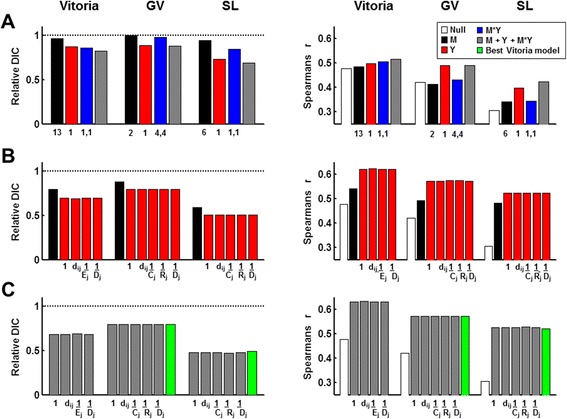Figure 4.

Comparison of Vitoria model selection results with other cities. Each bar represents the relative DIC (left-side plots) or Spearman’s correlation coefficient between the model-predicted and observed data (right-side plots) for a given model. Relative DIC is the model DIC divided by the DIC for the null model (model with only the offset and random effects of neighborhood). Each covariate was lagged and scaled using the best values (i.e., from model selection shown in Additional file 2: Figure S1, Additional file 3: Figure S2, Additional file 4: Figure S3, Additional file 5: Figure S4, Additional file 6: Figure S5, Additional file 7: Figure S6). (A) Within-neighborhood effects. Lags are indicated beneath the bars. Model structure is shown in the legend. No scaling factors were used. (B) Comparison of the type of approximation (f(x j )) used for weighting global connectivity on the case-notification terms (red). Form used for f(x j ) is indicated under the bars (1, random; d, distance; E, economy; C, commercial structures; R, residences; D, density). The global mosquito term is shown for comparison (black bar). Full i covariates were included in each model (i.e., there are 4 covariates). (C) Comparison of f(x j ) in the full models. Form used for f(x j ) is indicated under the bars (as in B). Full i covariates were included in each model (i.e., there are 6 covariates).
